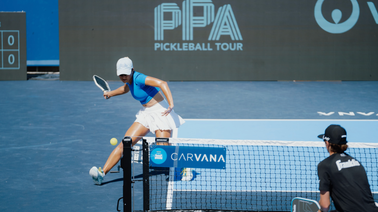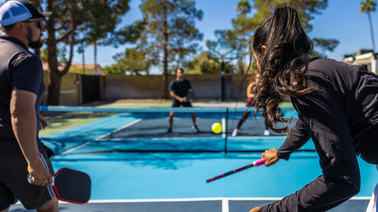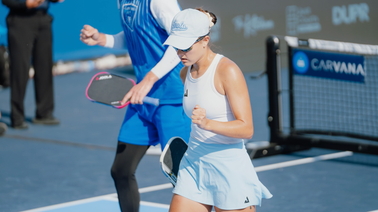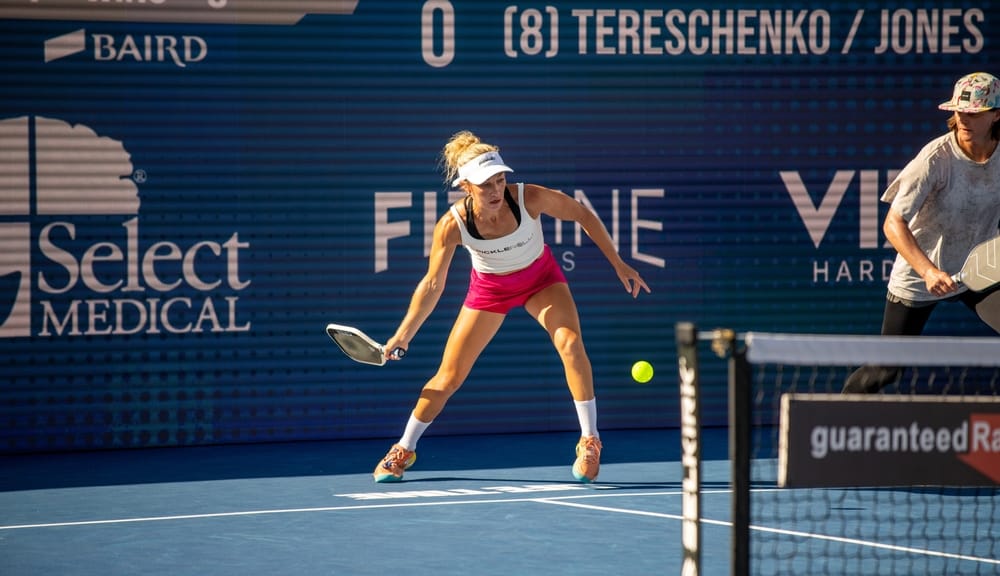
Do Deep Returns Win More Rallies? What about Drives vs Drops? | Pickleball Stats
As a student interested in sports analytics, I wanted to understand if specific strategies and tactics, such as depth of return or win percentage of 3rd shot drops versus drives, changed depending on skill level.
Under the guidance of Dr. Scott Powers, Assistant Professor of Sports Analytics at Rice University, I collected data through direct observation of almost 2,000 rallies across two major indoor tournaments* from over 150 different teams with DUPR ratings ranging from 2.5 to 5.0+ in 0.5 increments (Table 1).
*The two tournaments: 1) LifeTime NYC Tournament. LifeTime Penn1. New York City, NY June 22, 2024 and 2) Summer Slam & Jam, Pints & Paddles. Maple Grove, MN Aug 2-4, 2024
Table 1: Number of Unique Teams Observed
How Much Does Depth of Return Matter?
It is commonly accepted that a deep return increases the returning team’s likelihood of winning points.
I recorded if the return was deep (hit to the far ⅓ of the court) or shallow (any return that was not deep), the rally length and which team won the point. As skill level increases, the fraction of returns that are hit deep went from just over one-third for DUPR 2.5-3.0 players to around one-half at levels DUPR 3.5 and above and remained there, even for 5.0+ players (Table 2).
Table 2: Number of Observed Rallies and Percent of Returns Hit Deep#
# Each DUPR category with a minimum of 146 observed rallies
The data showed that a deep return significantly increased the chances of winning a point for all DUPR levels and significantly so for DUPR levels above 3.5.
For these DUPR levels (above DUPR 3.5), the win percentage with a deep return was remarkably consistent, around 70% versus 50% for a shallow return (Table 3).
Allowing the service team an easier path to the kitchen line with a shallow return completely negated the starting advantage of the return team in our data, with the probability of winning the point becoming equal for both.
For beginners and early intermediates (DUPR 2.5-3.0 and 3.0-3.5), there was a trend favoring a deep return, which did not reach statistical significance. The observed number of rallies in these categories was lower and may have reached statistical significance with a larger sample at these levels.
However, the overall difference between deep versus shallow returns was also smaller than that observed in DUPR categories 3.5 and above. This may be because simply keeping the ball in play for beginners is likely to have a dominant effect that weakens the value of a deep return.
These data suggest that the “average” intermediate/advanced player leaves considerable room for improvement and differentiation.
While serves are tougher as skill level increases, and since even 5.0+ players in our data set were only hitting ~50% of returns deep, any individual player able to hit returns deep the majority of the time should realize above-average performance.
Table 3: Win % By Return Team Based on Depth of Return
* p < 0.05
**Chi-Squared Test, 0.05 pre-defined significance level
3rd Shot Drives versus 3rd Shot Drops
To determine if there would be a difference in win likelihood if teams used a 3rd shot drop or 3rd shot drive, I recorded the frequency of each of those two shots and their prevalence (Table 5), along with rally length and which team won the point.
The mix of how often players used a 3rd shot drop versus 3rd shot drive seemed to be similar across the DUPR categories, though 5.0+ players showed a trend towards using drops more than drives. Anecdotally, it appeared the preferred style of play determined whether teams used a 3rd shot drop or drive more often.
Table 4: Number of Observed Rallies and Mix of 3rd Shot Drives vs Drops##
## Data when players used a lob or a shot that couldn’t easily be categorized as a drive or a drop were labeled as a “no call” and not recorded (roughly 17% of observed points)
Interestingly, there was no difference or even noticeable trend in win percentage between using a 3rd shot drive versus a 3rd shot drop in any DUPR category (Table 6).
Table 5: Win percentage for Return Team When Using a 3rd Shot Drive vs. 3rd Shot Drop
To understand this observation further and assess whether the quality of the return affected the win percentage between third-shot drives and third-shot drops, we separated the data into two pre-defined subsets, defined by the type of return (2nd shot): deep versus shallow.
The data show that the depth of return did not alter the results—third shot drives and third shot drops still had similar win percentages across all DUPR levels (Tables 7 and 8).
Table 6: When Return is Hit Deep, Win % for Service Team if Using 3rd Shot Drive vs. Drop
Table 7: When Return is Hit Shallow, Win % for Service Team if Using 3rd Shot Drive vs. Drop
That a 3rd shot drop would win as often as a 3rd shot drive was not obvious, especially since the 3rd shot drop is considered one of the most difficult shots in pickleball.
In particular, one could expect lesser-skilled players to have more difficulty hitting a 3rd shot drop. Therefore, I analyzed failure rates for the 3rd shot drive and the 3rd shot drop.
A point was considered a “3rd shot drive failure” if the drive went into the net or was hit out. The failure rate for the 3rd shot drop was estimated by looking at the number of shots into the net plus points the service team lost when the rally length was 4 or 5.
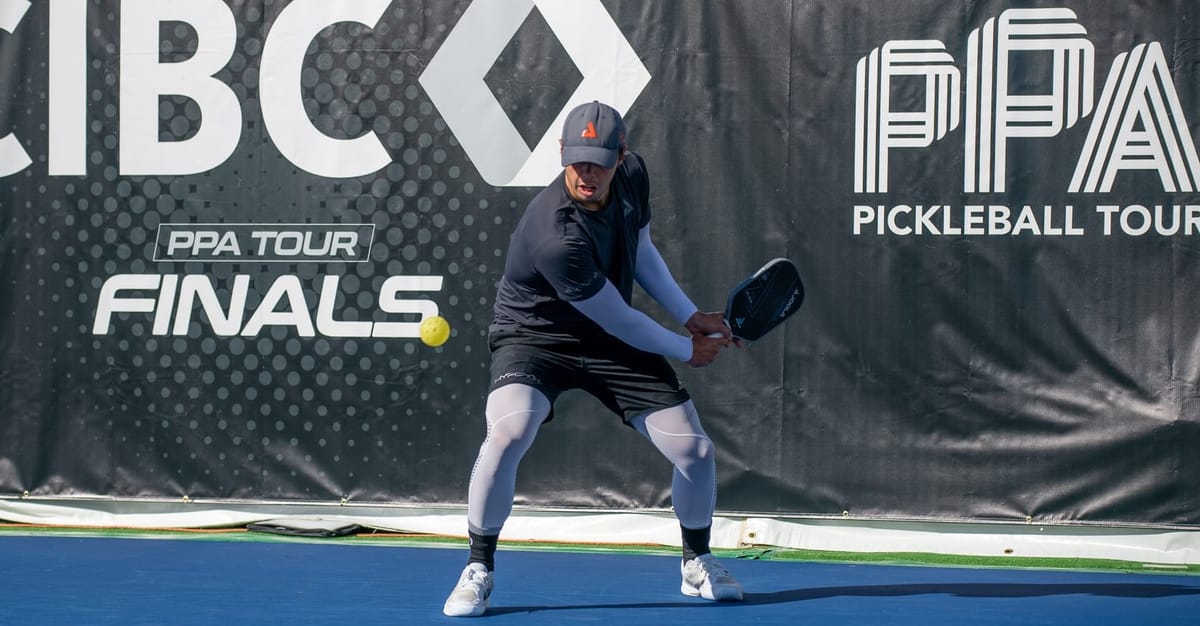
The assumption was that if the rally length was 4, the service team may have hit a “high drop” that the return team put away. A rally length of 5 similarly meant the service team got their paddle on the ball but could not put the ball back in play.
Surprisingly, the data show failure rates for the 3rd shot drive and 3rd shot drop are similar and high. At all DUPR categories, the failure rate of a 3rd shot was roughly equal to or greater than 20%.
While players, particularly beginner and intermediate players, may expect to make mistakes when attempting a 3rd shot drop, they may not realize the number of mistakes they might make when attempting a 3rd shot drive.
Table 8: Failure Rate of 3rd Shot Drives vs. 3rd Shot Drops
Other Observations
Not surprisingly, rally length correlated with skill (Table 9). Rallies lasted, on average, just above six shots for beginners and early intermediates and progressively increased to approximately 8 for advanced players
Table 9: Length of Rally
Key Conclusions
From this analysis, players should pay attention to 2 things:
- “Go Deep!” For many, it might mean going for the endzone in a football game. Pickleballers should adopt this line to remind themselves to hit returns deep–improving from the average of roughly 50% of returns hit deep would be meaningfully differentiating and result in above-average performance.
- “Don’t Drive Erratically!” For all players, since drives are thought to be easier to master than drops, it’s possible that players across all DUPR levels do not realize that error rates on 3rd shot drives may reach 20-25%. Reducing this rate should improve performance.


Jayan Gandhi
Jayan is a 12th grade student at Buckingham, Browne & Nichols School in Cambridge, MA. He enjoys playing pickleball, using data to analyze all sports, and cheering for Boston-based teams.






